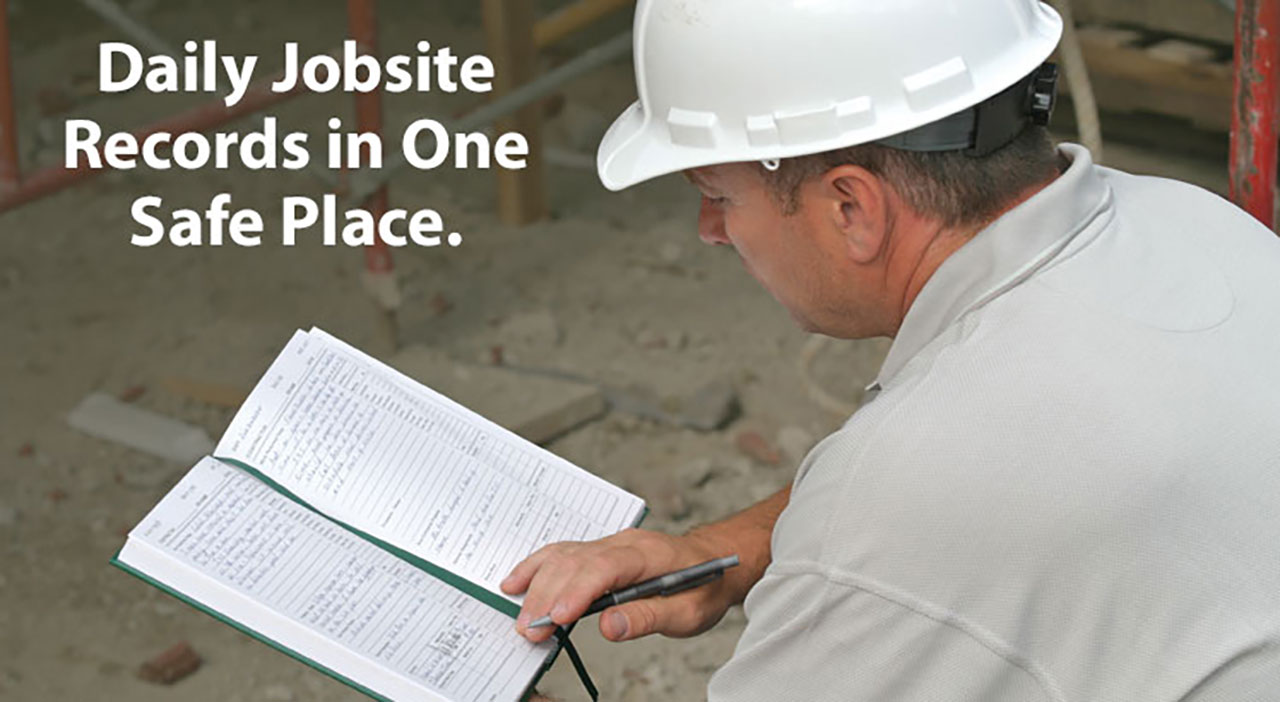Per the Occupational Safety and Health Administration (OSHA), injury rates in the construction industry are much higher than the national average. Injuries are usually because of one of four construction hazards that OSHA has identified as the most common. These common construction injuries can be avoided by using a Daily Log Book. Read on to learn about common workplace injuries and how keeping a Daily Log will keep your crew safe.
The Most Common Types of Workplace Injuries
- Falls
- Equipment/Vehicle Accidents
- Collapsed Trenches
- Electrocutions
Equipment failures, inadequate protective systems, and unsafe work practices are to blame for most of these accidents. Addressing the causes of these top four types of accidents will prevent mishaps and keep construction workers safe.
The Benefits of Daily Logging
You can avoid Common Workplace Injuries with Your Daily Log Book. If you regularly inspect the construction site and focus on preventing the most common construction hazards, you'll give yourself the best chance of success. Click here to view Safety Meeting Outlines Daily Log Book options.
How Daily Logging Can Help you Avoid
Common Incidents
- Avoid falls from failure to use harnesses, the improper use of ladders and scaffolds, and uncovered floor openings.
- Maintain records for inspections of ladders, scaffolding, and safety equipment. Always be on the lookout for these safety hazards and log them. Having a record of unsafe practices in a safety meeting will make you more effective and convincing.
- Increase spatial awareness: accidents happen when drivers don't see workers.
- Examine the job site and look for employees in compromising positions, such as between a stationary object and a moving vehicle. Recording this in your book will help because workers aren't always aware of their surroundings.
- Avoid collapsed trenches with adequate protective systems.
- Routinely log inspection reports, especially if there's been heavy rain or impact on the trench. Also, make sure that workers can escape quickly by positioning ladders nearby.
- Take account of utilities before starting the job to avoid electrocutions.
- Inspect the construction site regularly. Equipment gets moved around, and someone may get too close to a power line if you're not keeping track daily. Making notes of the location of power lines when using ladders or scaffolds will keep everyone safe.
Injury rates in the construction industry are much higher than the national average. They are usually because of one of four construction hazards that OSHA has identified as the most common. These common construction injuries can be avoided by using Safety Meeting Outline's Daily Log Book.

